
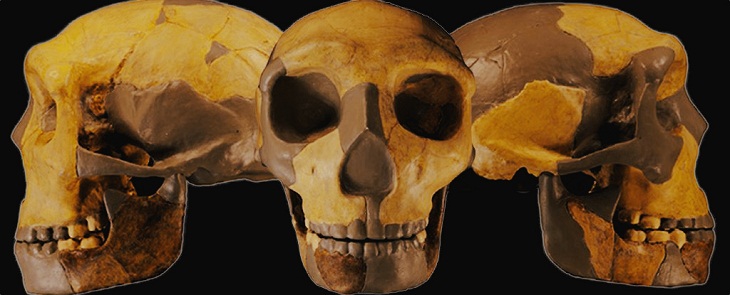
The parts identified as the limbs, skull cap, and jaw, thought to have originated from a child aged around 12 or 13, displayed what experts from the Chinese Academy of Sciences (CAS) described as "primitive characteristics." The child's remaining facial features, on the other hand, were strikingly similar to those of modern people.
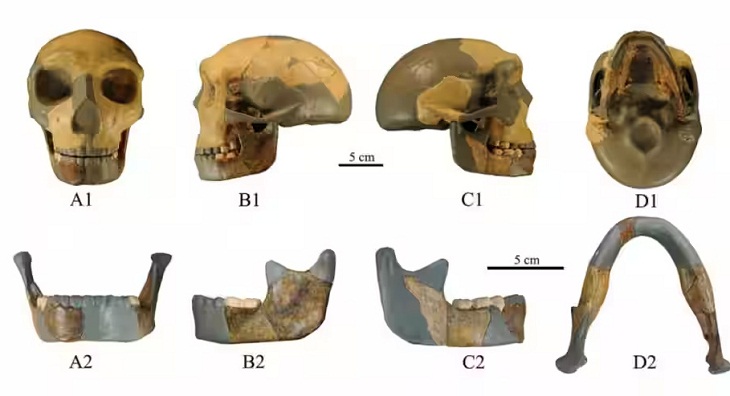
The skull and jaws of HLD 6. (Journal of Human Evolution, 2023)
The findings have led the research team to theorize that a previously unknown lineage of hominins has been uncovered. This lineage represents a hybrid connection between the branch that gave rise to modern humans and the one that led to Denisovans in the same geographical area. The new discovery indicates the presence of three distinct lineages: the Homo erectus lineage leading to Homo sapiens, the Denisovan lineage, and a third genetically proximate branch in the hominin family tree in Asia.
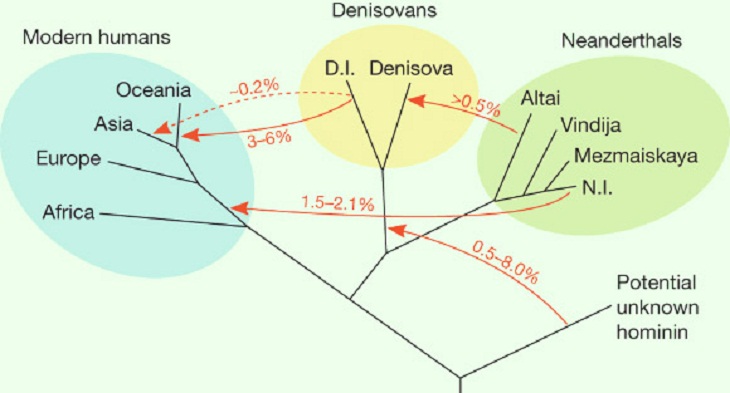
This finding carries extra weight because earlier studies on Neanderthal remains across Europe and western Asia have pointed towards the existence of a fourth distinct lineage of human-like creatures during the Middle to Late Pleistocene period.
This missing group, however, has never been officially identified in the fossil record. The new findings complicate the path to modern humans. The mosaic of physical features found in this ancient hominin instead supports the coexistence of three lineages in Asia – the lineage of H. erectus, the lineage of Denisovan, and this other lineage that is "phylogenetically close" to us.
Homo sapiens first appeared in China some 120,000 years ago. It is possible that the last common ancestor of Homo sapiens and Neanderthals emerged in southwest Asia and spread to all continents. More archeological investigation will now be required to confirm that theory.
The new study was published in the Journal of Human Evolution.
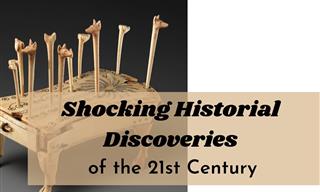
8 Shocking Historical Discoveries of the Last 20 Years
Let’s take a look at some of the most shocking historical discoveries and findings made since 2001
 5:43
5:43
The World Needs to Know About This Ancient Martial Art
Kalaripayattu, believed to be one of the oldest surviving martial arts, might have given birth to Kung Fu.
 4:35
4:35
Uncovering the Mystery of the Lost Kingdom of Kush
The Kingdom of Kush was an ancient civilization, the origins of which remain unknown to the best of historians.

A Fascinating History of Clothing in the Ancient World
Ever wondered what fashion was like in the ancient world?
 12:03
12:03
Would You Dare Visit These Haunted Ancient Sites?
These beautiful ancient sites have one thing in common. Apparently, they are all inhabited by ghosts!
 17:52
17:52
History Lesson: The King Who Spread the Message of Peace
Know the story of the great ancient Indian King, Ashoka.

When Under a Microscope, Even Ordinary Things Seem Alien
Have you ever given any thought to what every day things look like under a microscope? Some of these images are truly beautiful - see for yourself in the images below.
 17:48
17:48
This Visual Shows the Science Behind the Shape of Rivers
A fascinating visual model that explains why and how rivers change their course.

This South African Plant May be the New Cannabis
Is this plant the new cannabis? What will the woolly umbrella plant do for medicine?
 12:57
12:57
The Curious Science of Tricking Your Taste Buds
Did you know you could confuse your sense of taste? Find out how!

10 Fascinating Facts About the Subconscious Mind
10 facts about the way the subconscious mind works
 4:13
4:13
What Does Medicine ACTUALLY Do In the Body? Fascinating.
What really happens in our bodies when we take medicine, have you ever wondered? This video will answer your question.

6 Signs That Someone is Listening on Your Cellphone Calls!
With technology advancing all the time, there is the ever-increasing chance of our phones being tapped. Here are 6 signs that your phone could be tapped.
 5:48
5:48
3 Surefire Ways to Always Identify Pseudoscience
Find out how you can identify pseudoscience, and learn how it differs from actual science.

10 Real-Life Technologies That Science Fiction Foretold
Sometimes even the wildest science-fiction predictions about the future come true.

25 Feats of Engineering that Leave Everyone Amazed
The amount of planning and sheer brain power it took to design and execute these structures, proving once again that there are true geniuses out there.

Scary Stories: 11 of the World's Creepiest Experiments
Truth is stranger than fiction, and this can be said for occurrences in the scientific world too. Here are 11 of the world's creepiest experiments
 11:39
11:39
Is There Any Way To Destroy or Deflect Asteroids?
Watch an interview with Cathy Plesko, a leading scientist working on preparing for the dangers of an asteroid attack
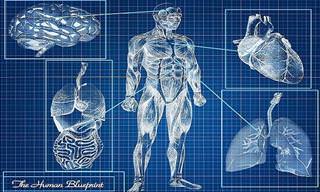
These Are the Miracles That Happen in Our Bodies Every Day
There is a lot that happens inside our bodies every single day. Did you know any of these facts?
 4:34
4:34
Fascinating Science: How Old Can We Actually Get?
All things being equal, and technology continually progressing - How old can a human body really get?

10 New Things We've Learned About The Brain
We have learned some astonishing new things about the human brain in recent times.
 26:45
26:45
Future Technology: Inventions That Will Change Our World
Check out a few amazing futuristic inventions that are about to become mainstream.
 7:27
7:27
Check Out This Radio-Controlled Lego-Powered Submarine
This is the height of creativity! Check out this insanely cool Lego submarine. It actually works!
 16:28
16:28
This Secret Invention Changed the Course of WW2
Let’s take a closer look at the proximity fuze, also called Vt Fuze, an invention that changed the course of the second World War.
 9:05
9:05
A Tunnel Built by a Swarm of Robots - Jaw-Dropping!
Imagine a swarm of robots attacking a mountain and smashing it to pieces...
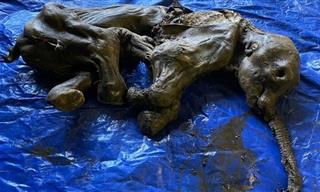
Incredible Science Breakthroughs That Made News in 2022
Let’s check out some of the most interesting scientific discoveries of 2022.

These Photos Show How Dependent We are On Smartphones
Technology has taken over and these funny (but true) photos help to drive this fact home.

I Never Knew These Stunning Facts About Our Universe
If you thought you understood the universe, you'll be completely floored by this insane facts.
 7:15
7:15
Toilets: The Greatest Medical Advancement in Human History
While toilets make some people laugh, they are actually a deadly serious medical advancement. This video explains what toilets mean to civilization.

GUIDE: How Alcohol Affects Us, Drink by Drink...
In this article, we're going to discuss the exact amounts of alcohol in our blood and what they look like, including how each level affects us and our ability to function.
 9:31
9:31
The Channel Tunnel - The 7th Wonder of the Modern World!
The construction of the Channel Tunnel is said to be an impossible feat!
 12:55
12:55
Watch This Man Build a Future Using Trash from the Past
In this video, you will see what this incredible community has been able to accomplish by building homes from recycled materials.

6 Fascinating Stories of Accidental Medical Discoveries
From penicillin to pacemakers, here are the medical breakthroughs that were discovered by accident.
 33:50
33:50
The Future is in Our Hands - Next Generation Technology
These young brilliant minds grind hard at finding and creating solution to waste recycling, and the results are promising.

Remembering the Life and Wisdom of Stephen Hawking
Stephen Hawking possessed one of the greatest minds the world has ever seen, but was also impaired by a debilitating disease. Here are his life ant times.
 2:23
2:23
Introducing the Astronauts That Were Just Launched Into Space
The two astronauts — veteran NASA fliers Bob Behnken and Doug Hurley are honored to have been on this flight. Let's get to know them!

The Surprisingly Convoluted History of Traffic Lights
What did the first-ever traffic light look like? Probably stranger than you imagine...

5 Robotics Trends Anticipated in 2024
What does 2024 have in store for the field of robotics?
 3:16
3:16
You Wouldn't Believe How Far Technology Has Come
Take a look at the advancements of technology in this video. Impressive.

STUDY: The Effect of Personality on Our Level of Happiness
Researchers finally know which types of people will always be happier than others.

This Humanoid Robot May Join the Workforce Very Soon...
Meet Digit – a bipedal robot that's ready to join human workers at warehouses around the world as early as 2024.

First US Embryo to be 'Edited'; Rise of Genetic Changes!
Could the first human embryos be genetically modified?
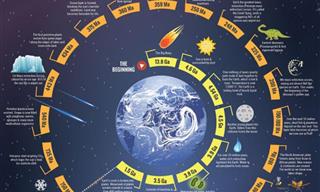
The History of Our Planet in One Beautiful Spiral...
This beautiful infographic offers us a remarkable story – the history of Planet Earth.

Scientists Develop Wrap That Determines if Food is Spoiled
Scientists at MIT have developed a biodegradable plastic-like wrap that changes color when food goes bad. Find out more…

6 Remarkable Yet Overlooked Minds That Shaped Our World
These underappreciated geniuses deserve more recognition.

What Metals Do We Mine the Most? This Graph Shows All!
Did you know the world mined 2.8 billion tonnes of metals in 2021? Let’s discover what metals we mined the most.
 3:26
3:26
The McGurk Effect - Don't Believe Your Eyes!
What we hear can be affected by what we see...


